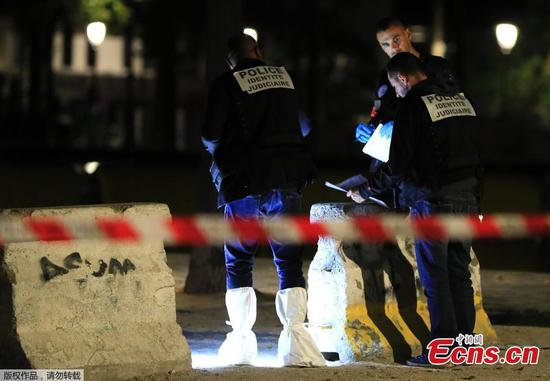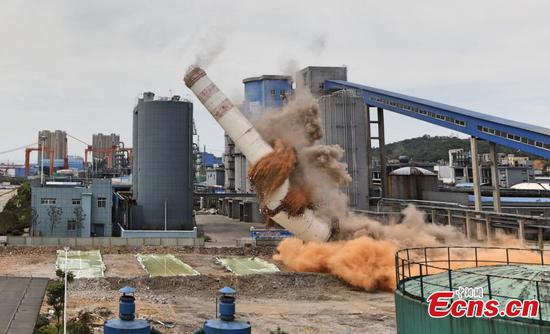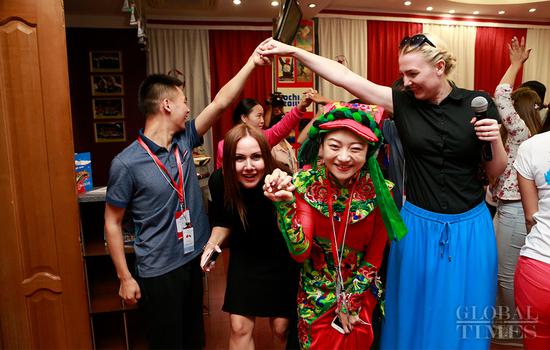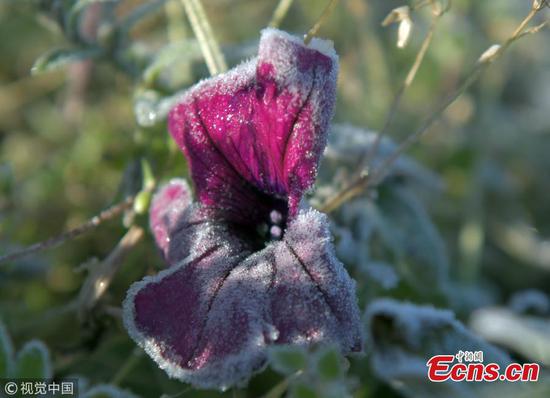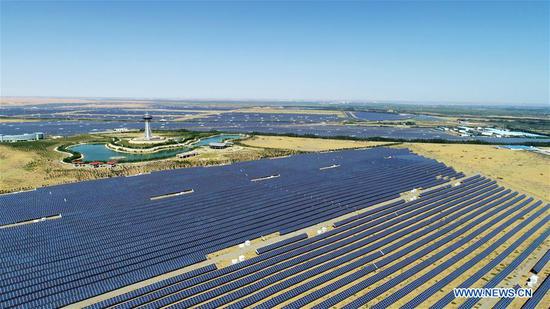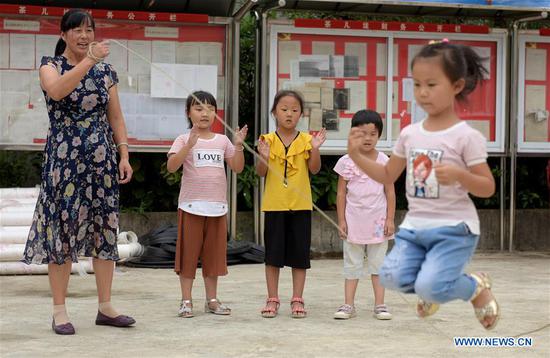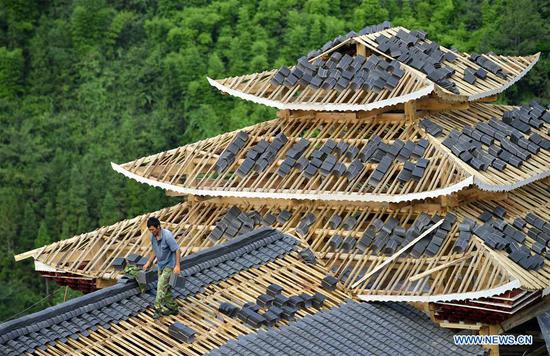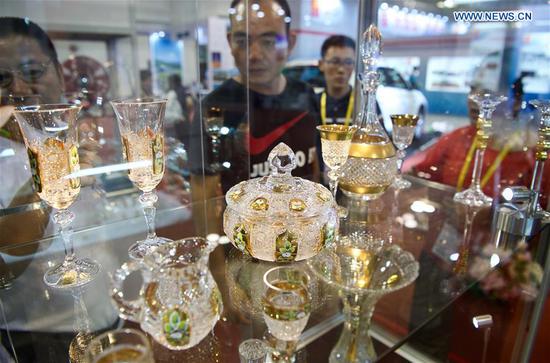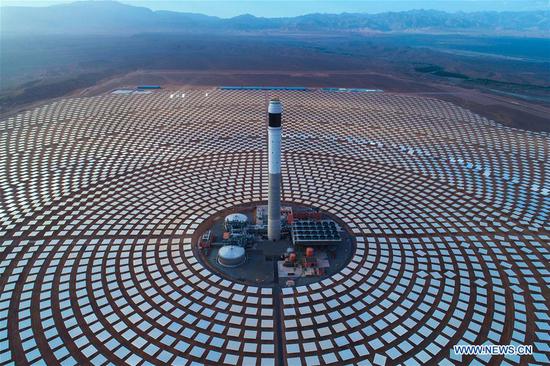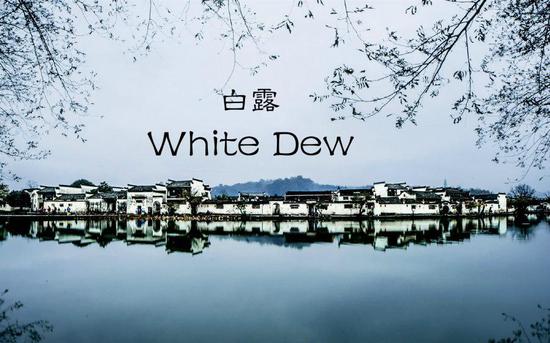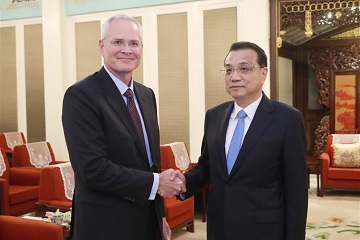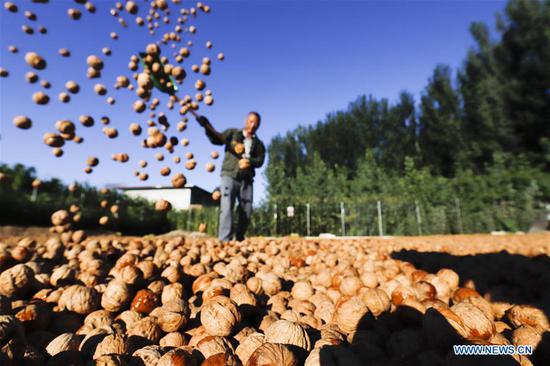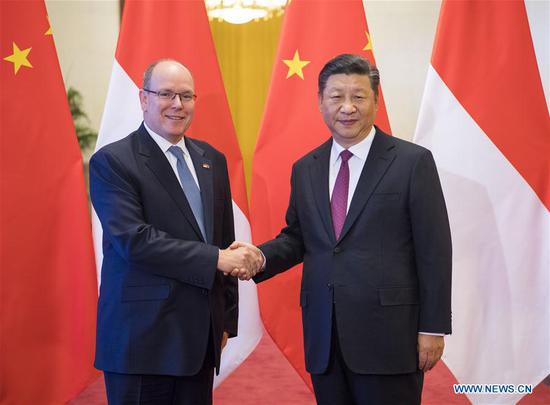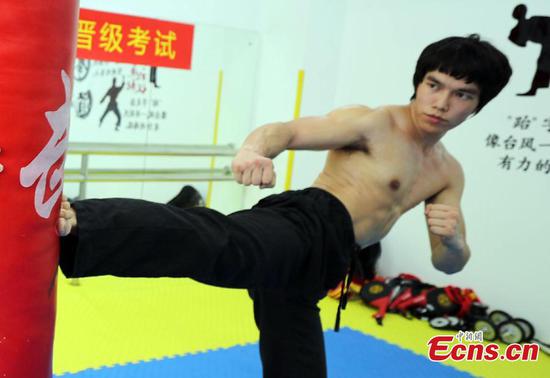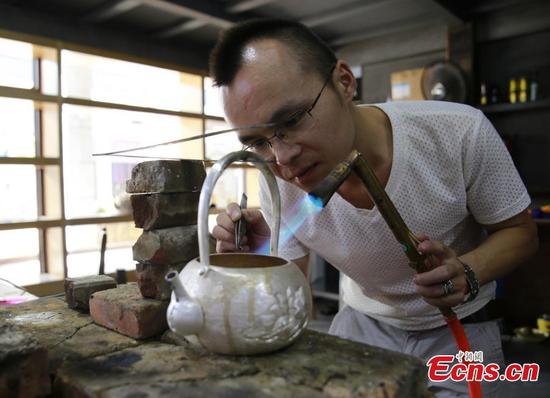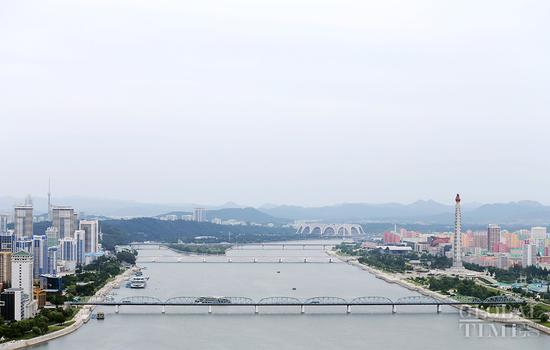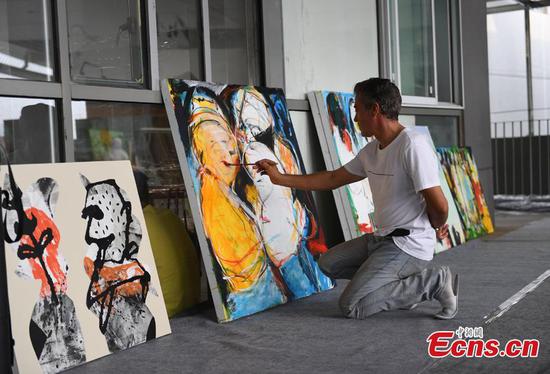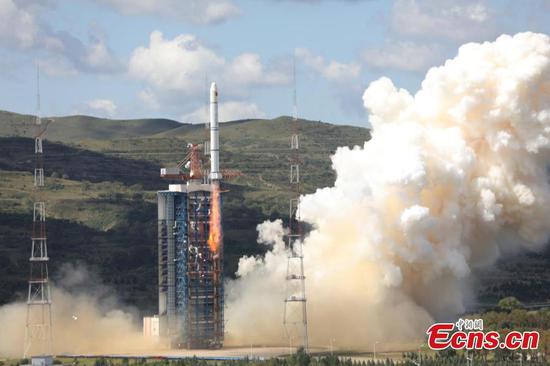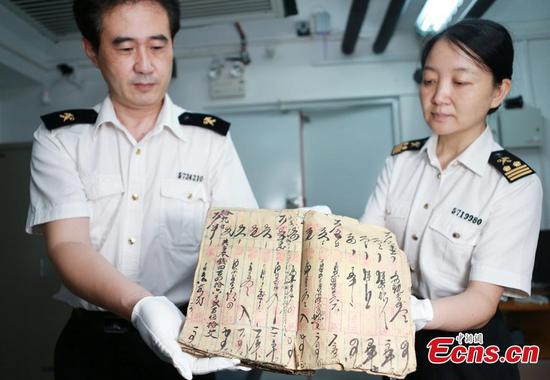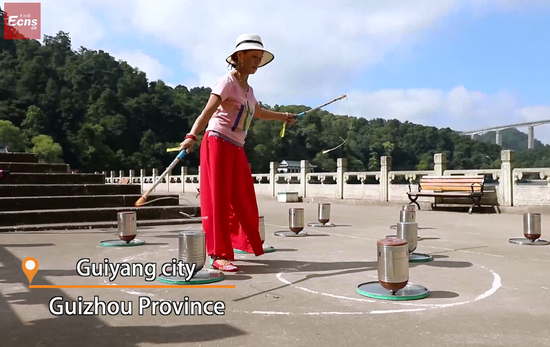
An employee of a Jiujiang, Jiangxi province-based photovoltaic products producer puts finishing touches to PV products at an assembly line in Jiujiang. (Photo by Zhang Haiyan/ For China Daily)
The European Union has terminated measures against China's dual-reaction photovoltaic or PV products, and this will restore normalcy in the Sino-EU trade in the segment, provide a predictable business environment, and boost cooperation between the two sides, officials and experts said.
The PV segment has been the "hardest hit" by trade frictions involving China, the EU and the United States. At the end of August, the European Commission issued a final notice saying the anti-dumping and countervailing measures against solar panels from China will be terminated from Sept 3, China's Ministry of Commerce announced in an earlier statement.
The EU initiated antidumping and anti-subsidy measures against Chinese solar panels, wafers and cells in June 2013. In March last year, it extended them by only 18 months, as against the norm of a five-year extension, signaling a possible end in September this year.
As PV products are important for clean energy, China is willing to continue to uphold the spirit of cooperation and work with the EU to cut the emission of greenhouse gases, promote free trade and the rules-based multilateral trading system, said Yu Jianlong, secretary-general of the China Chamber of International Commerce.
"In its March 2017 decision, the commission aimed to find a balance between the interests of users, importers and EU producers of solar panels," the EC said in a statement. "The commission also wanted to ensure that EU consumers could buy panels at prices close to the world-market level."
According to the China Photovoltaic Industry Association, the EU market used to account for 90 percent of the country's total exports of such products. EU-related exports peaked at $20.4 billion in 2011.
But the 2013 anti-dumping measures caused a dramatic slide. In 2016, China's PV exports to the EU markets were worth $14 billion. Shipments in 2017 remained around that level, totaling $14.53 billion.
Wang Bohua, secretary-general of the CPIA, said the drop in prices of PV products exported to the EU and the U.S. is a serious issue.
"The components exported from China have lost competitiveness after being subjected to anti-dumping and countervailing duties. This is one of the reasons for the continued decline in export volume to the EU and the U.S.."
He said as the European markets tend to be conservative and stable, the end to the EU's restrictions won't affect demand this year. However, demand in the European markets will be higher than the originally anticipated level due to price cuts in 2019.
China's PV product exports rose 25 percent year-on-year in the first quarter of this year, the first such rise since 2012, according to CPIA data. Currently, India, Japan, Australia, Brazil and Pakistan are the major buyers of Chinese solar panels, according to the General Administration of Customs.
Xue Rongjiu, deputy director of the China Society for WTO Studies, said the EU's decision to remove minimum import price restrictions on Chinese products would help facilitate Chinese solar product exports to the EU markets, cut solar product prices in the EU, and stimulate demand.
"It'll promote faster solar grid parity in the EU leading to more unsubsidized solar projects, and the termination could also lead to the scrapping of Section 201 tariffs by the U.S. on solar imports and related tariffs in other economies."










